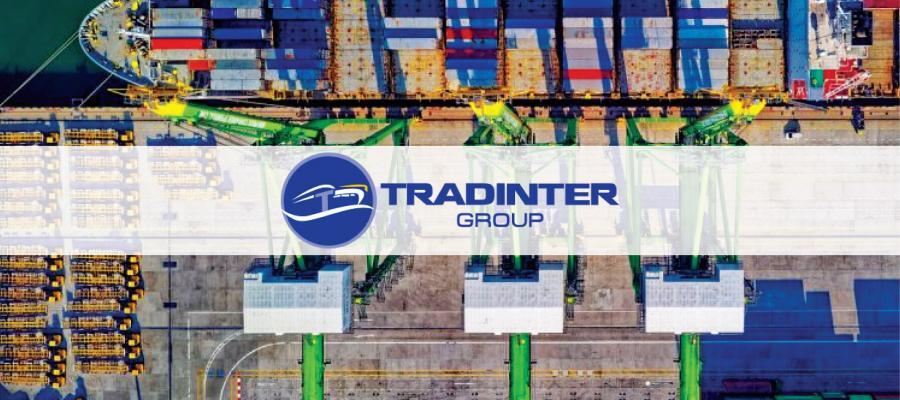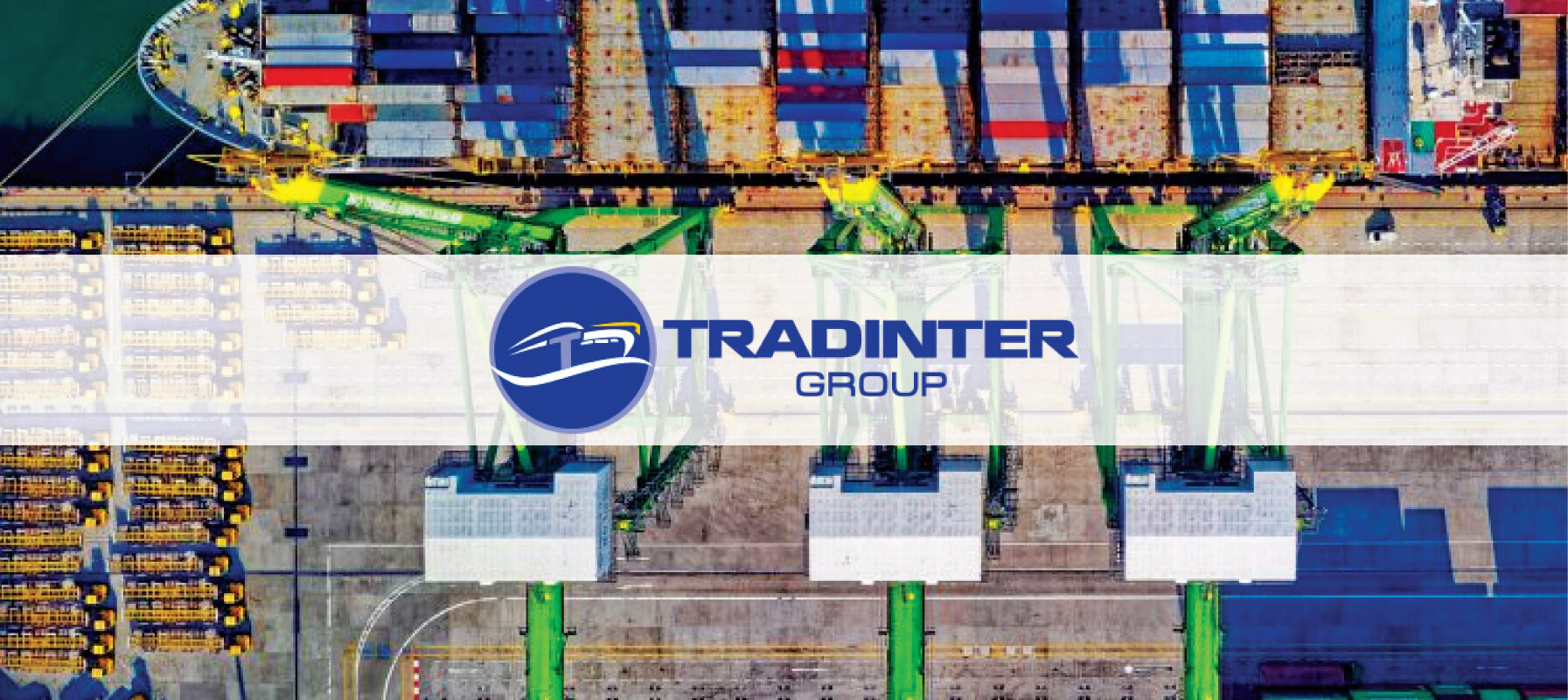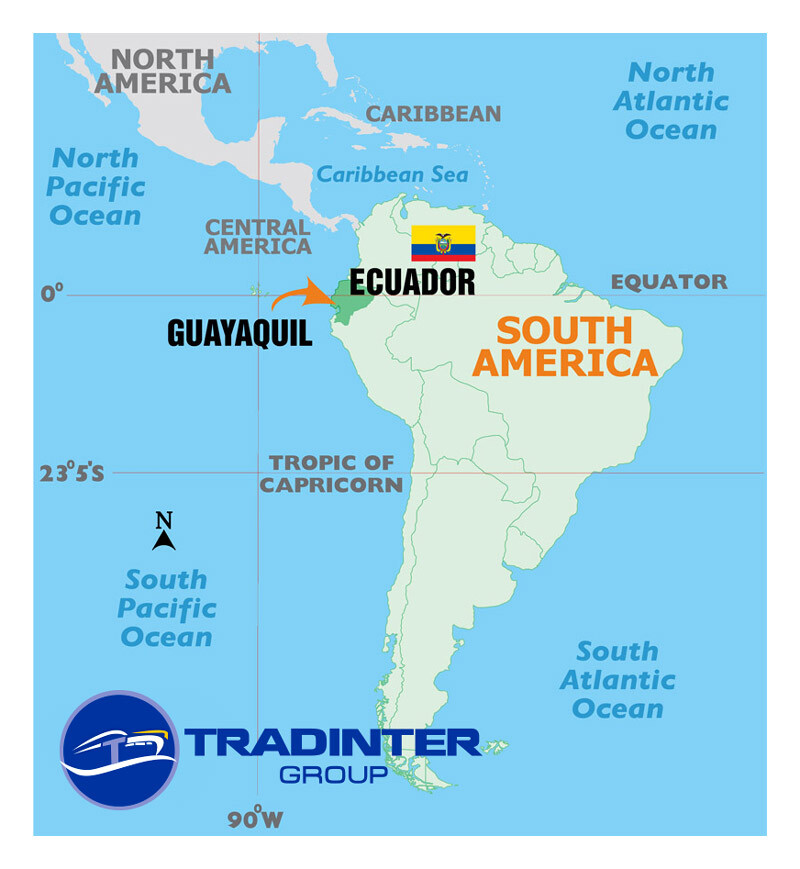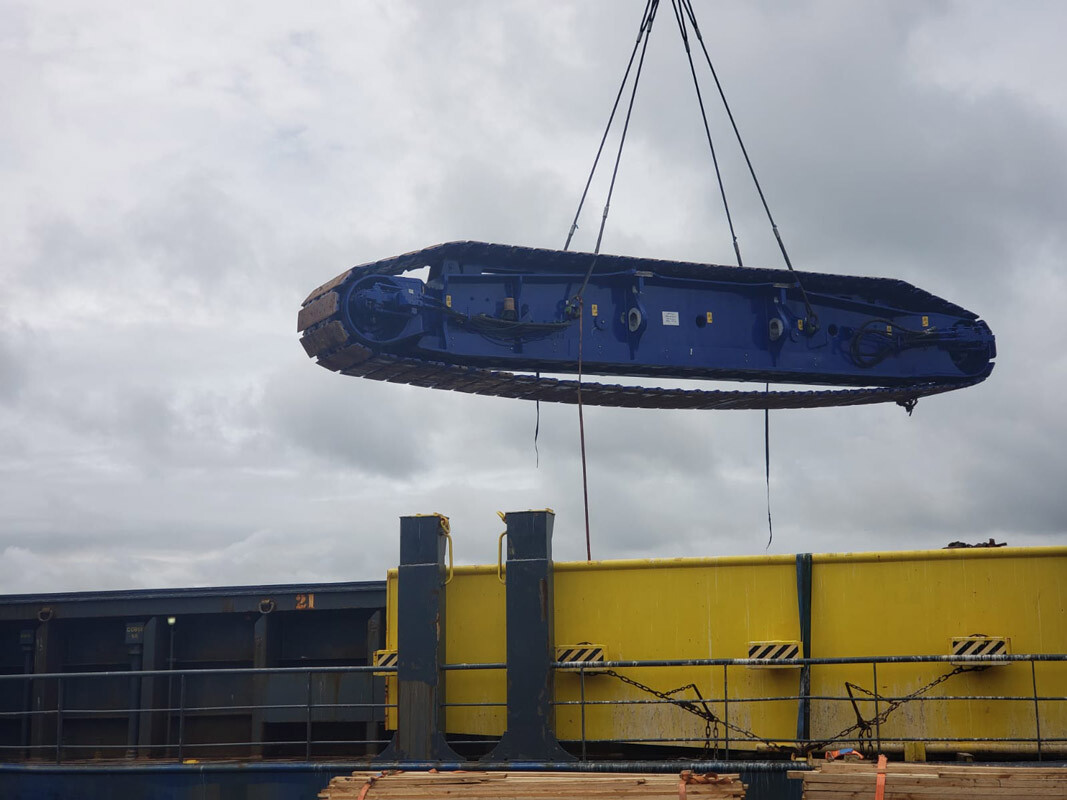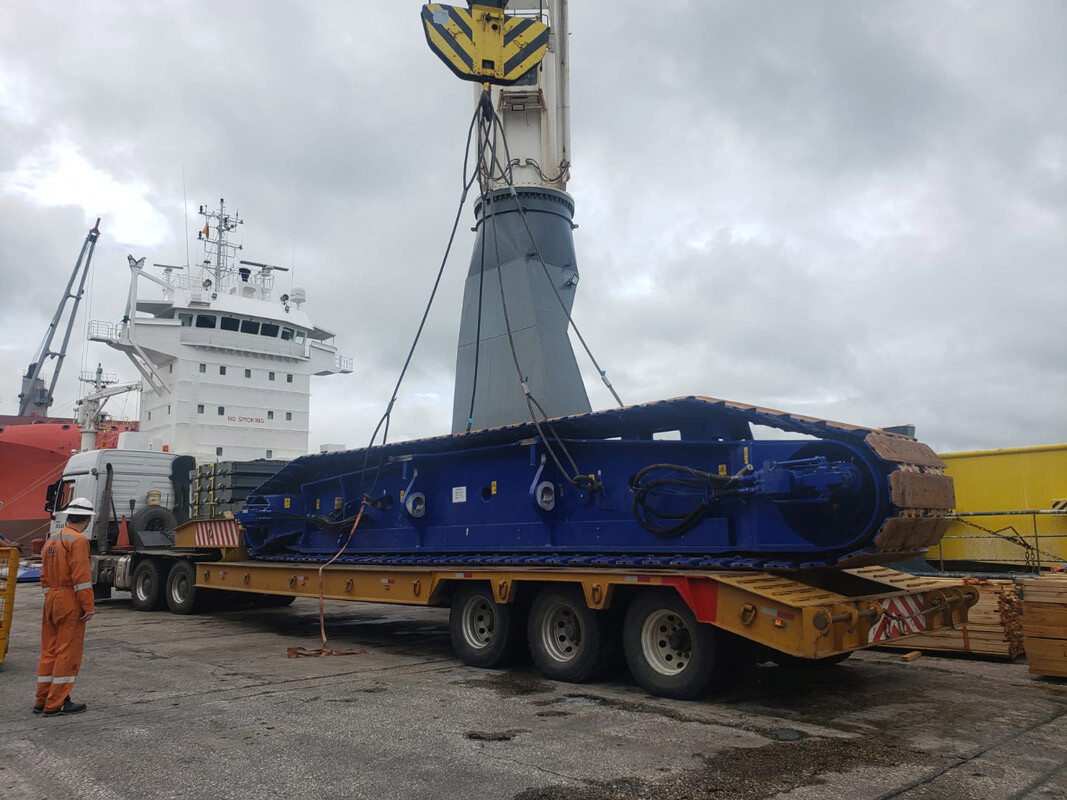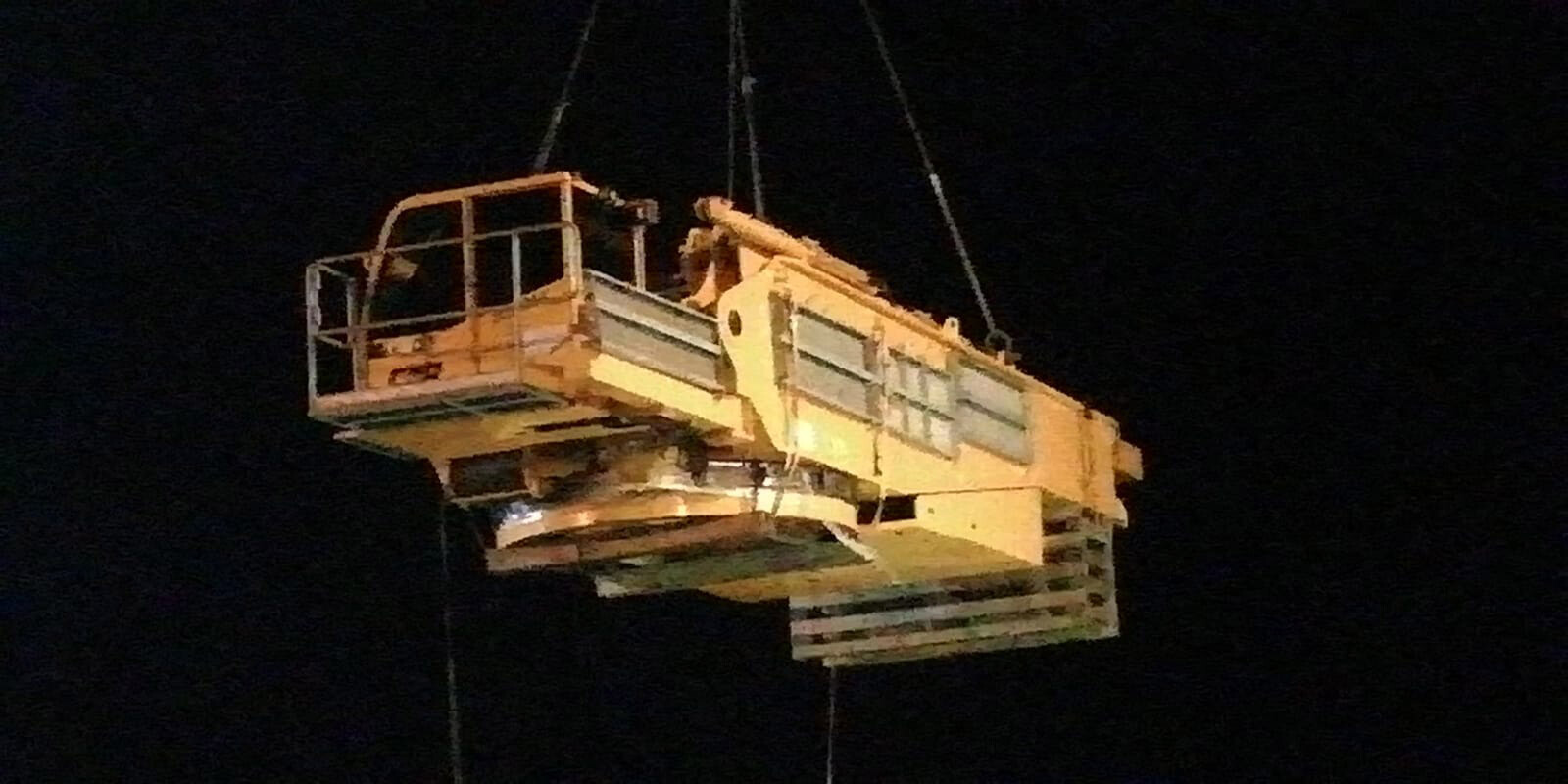Interview with
Ms. Gabriela Vasquez
Sales Manager
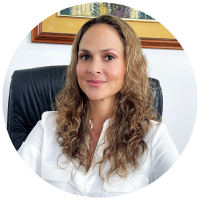
First of all Gabriela, please tell us more about Tradinter Group. When did you establish the company, who owns it, and how many staff members have you got currently?
My Father, Enrique Vasquez, Founded Tradinter “Transporte Y Representaciones Internacionales S.A” Shipping Agency in 1992. He started his relationship with the shipping business back in 1975 when he was hired by Transnave, the Ecuadorian flag shipping line with regular services to main ports around the world.
After working for 15 years in Transnave, he left this company to start his own business named Tradinter, a shipping agency. Tradinter started representing shipping lines with regular services to Ecuador. As the time passed, other port services and logistics-related companies came to join what we now call Tradinter Group. Through its international logistics division named Tradinter Logistics and a select group of professionals, we provide multimodal services (air, sea, land) with worldwide coverage.
Our current group of staff is made up of 68 members.
Tell us about the ports of Ecuador. You are located in Guayaquil which I believe is a river port, right? What other ports are used (if any) in Ecuador.
Right, the port of Guayaquil is located 50 nautical miles from the sea connected by a channel of brackish waters steaming on the channel with assistance of a pilot.
We are based in Guayaquil, the main economic city of Ecuador and the most developed in port infrastructure with 4 terminals able to handle any kind of cargo and a market participation of about 80 percent of total Ecuadorian cargo.
The other relevant ports are:
- Posorja Port (started operations 6 years ago and just 50 miles close to Guayaquil’s Port)
– Container terminal - Esmeraldas Port
– Multipurpose terminal located at the north of Ecuador mainly for general cargo - Manta Port
– Multipurpose terminal located between Esmeraldas and Guayaquil mainly for imported cars - Puerto Bolívar
– Multipurpose terminal in the South of Ecuador mainly bananas
Do you have experience in handling project cargoes to/from Ecuador? If you do, could you provide us with some examples of projects you have handled?
We have represented shipping companies specialized in carrying project cargoes, mainly oil drilling equipment, transformers, shore cranes, etc.
We have also carried cargoes for brewery constructions as well as water dam infrastructures, etc. Experience in this field is just one of our strengths.
Are you seeing that some shipping lines in Ecuador also try to compete with the freight forwarders? What is your opinion about that?
Yes, many shipping lines on this side are offering additional services in order to close the logistic chain. They are also keeping in close contact with main importers and exporters, offering better conditions to those given to Freight Forwarders.
Are you currently a member of any networks? If you are, what is the reason for it? Do you find it useful?
We are members of the Cross Ocean Network.
To be a network member is very useful and has some advantages. One of them is that it gives us security since we know that all members will be trustworthy, offering the same kind of level of service we want to offer to our clients at ports we don’t usually have operations in. It also provides updated information relevant to our business.
For how long have you been working in logistics, Gabriela? What do you like about working in this field?
I have been working in logistics since 1996. I only stopped for a period of 4 years when I had to travel abroad to finish University. My first job was at MSC Ecuador, and then I started working at TRADINTER.
What I like most about this field is that I get to learn something new every day, so I never get bored. Logistics are constantly evolving due to changes linked to technology and world events. I also get to know different kind of people and cultures which makes it interesting.
Customs clearance in Ecuador—is that difficult? Is there any particular rule of thumb you could give our readers when having business with Ecuador?
Custom clearance is difficult in Ecuador due to the bureaucracy that exists in the country but is not a problem any more. Nowadays all paperwork, is virtually handled which makes clearance a faster process.
The rule of thumb when doing business in Ecuador is to make sure you ask your partner about all the required permits and documentation for clearance. Permits must be ready prior to shipment. Shipping the cargo without having all permits ready can cause huge problems, high costs, and sometimes reexportation.
How would it be best for our readers to reach you?
My full contact details are follows:
Email: gvasquez@tradinter-ec.com
Mobile: 593 987749367
TRADINTER GROUP
Av. Carlos Julio Arosemena Km. 3 Urb. Albán Borja Edificio Classic Piso 4 Of. 401
Guayaquil-Ecuador
PH: 593 4 2202915 / 593 4 2204092 Ext.106
Web Site: www.tradinter-ec.com


